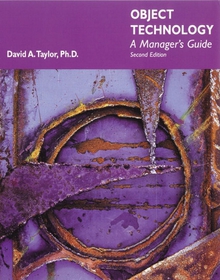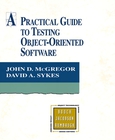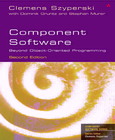Object Technology
A Manager's Guide
2nd Edition

Book Details:
| Publisher: | Addison-Wesley Professional |
| Series: | Addison Wesley , Technology |
| Author: | David A. Taylor |
| Edition: | 2 |
| ISBN-10: | 0201309947 |
| ISBN-13: | 9780201309942 |
| Pages: | 224 |
| Published: | Sep 21 1997 |
| Posted: | Nov 19 2014 |
| Language: | English |
| Book format: | CHM |
| Book size: | 3.61 MB |
Book Description:
"The first edition set a standard of excellence that has eluded all followers, and I have recommended it to my clients for years. The new edition is a gift to the field and should be required reading for all managers." - Adrian J. Bowles, Ph.D., Vice President Giga Information Group "One of the most readable introductions you will find. The new edition offers vital insights into the effective use of objects in business." - Chris Stone, President Object Management Group The first edition of Object Technology: A Manager's Guide is widely viewed as the classic introduction to this powerful computing concept. Object technology offers increased agility, significant time-to-market reduction, and the opportunity to exploit the potential of the World Wide Web by deploying globally distributed business systems. At a time when many of the world's largest companies are making the transition to object technology, David Taylor has updated his book to address the important issues facing the growth of object technology and to provide a glimpse into the future of this evolving paradigm. In updating this seminal work, David Taylor has retained the signature conciseness and,clarity of discussion that made the first edition a best-seller. Object Technology: A Manager's Guide, Second Edition, covers the key terms, emerging concepts, and useful applications of objects. Managers, salespeople, engineers, software developers-anyone interested in understanding or implementing object technology-will find this a lucid introduction to the topic. Highlights of this new edition include: An explanation of how to use objects to create evolutionary software that rapidly adapts to changing business conditions, eliminating the need for most new application development. An introduction to Java, and an explanation of how its use of message interfaces enables a new generation of portable, mix-and-match, Internet-enabled business objects. An update on the state of object databases and extended relational databases, with guidelines for combining the two for optimal information storage. An introduction to the new generation of object engines and how they combine storage and execution capabilities for maximum software integration. 0201309947B09102001
Download Link:
Related Books:
A Practical Guide to Testing Object-Oriented Software
While developers and IT organizations increasingly acknowledge the importance of software testing, few know how to proceed -- especially when it comes to testing advanced object-oriented software systems. In this book, two leading O-O test researchers and consultants outline a start-to-finish methodology for testing: what to test, why to test it, how to test it, who should do the testing, and when. The book is organized around a task orientation, encompassing testing models; testing components, systems and subsystems; and planning for testing. The authors review the unique challenges associated with object-oriented software testing, offer practical insights into testing priorities, introduce each leading testing technique, and walk step-by-step throu...
Component Software
Beyond Object-Oriented Programming
2nd Edition
The author describes his book as a "unique blend of market and technology coverage, broad and fair coverage of current technologies and a deep discussion of real problems with their solutions where known". The first edition won the "Jolt Award" became the leading book on the market to combine explanations of what the key technologies are, how to use them and why they are important in the software market-place, and look at these in terms of both the technical and business issues. The book was also the first to define components and clarify the key questions surrounding them, show how they are key to software design and offer a histor...
Design Patterns
Elements of Reusable Object-Oriented Software
* Capturing a wealth of experience about the design of object-oriented software, four top-notch designers present a catalog of simple and succinct solutions to commonly occurring design problems. Previously undocumented, these 23 patterns allow designers to create more flexible, elegant, and ultimately reusable designs without having to rediscover the design solutions themselves. * The authors begin by describing what patterns are and how they can help you design object-oriented software. They then go on to systematically name, explain, evaluate, and catalog recurring designs in object-oriented systems. With Design Patterns as your guide, you will learn how these important patterns fit into the software development process, and how you can leverage t...
2007 - 2021 © eBooks-IT.org



